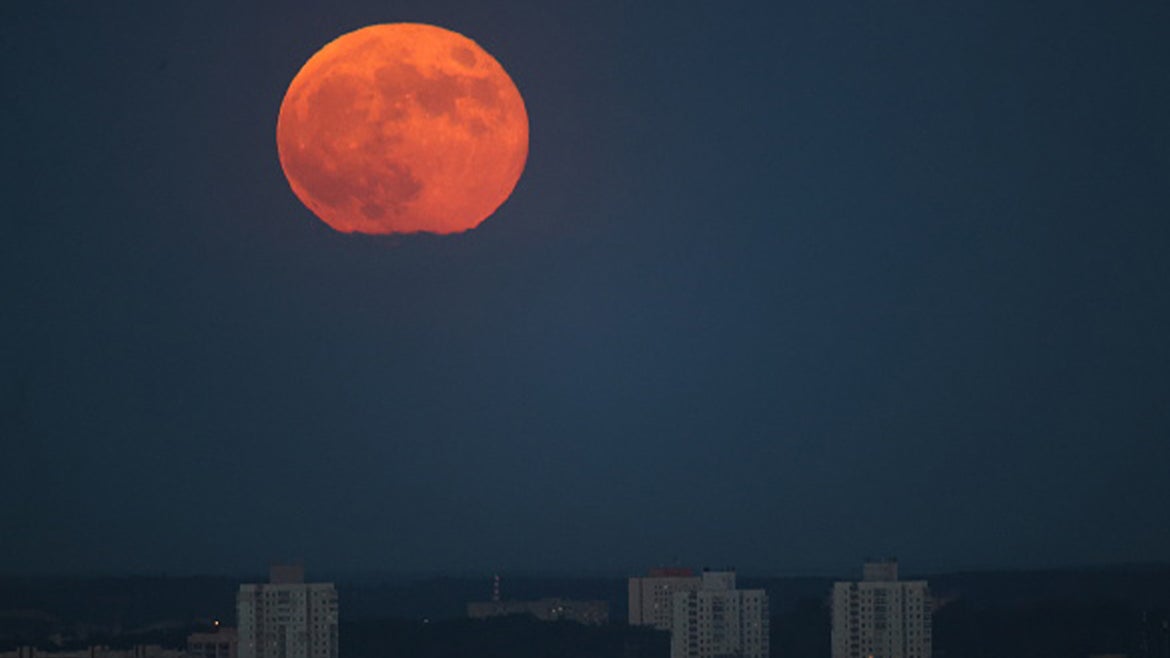For those looking to catch a glimpse of this phenomenon, the full moon will reach peak illumination on Thursday, June 24, at 2:40 p.m. ET, but won't be visible until it rises above the horizon later that evening.
The last supermoon of 2021 is set to make its debut when the strawberry moon lights up the night sky next week. The upcoming event is one of many epic lunar events that have been taking place since the start of 2021. It was only last month when spectators indulged in the "super flower blood moon" eclipse.
The June full moon, sometimes called the “strawberry moon,” according to the Farmer’s Almanac, was given its name by Native American tribes for the strawberries harvested in parts of North America during this time of year, CBS News reported.
The term "supermoon" is used to refer to the full moon when it is at or near its closest point to Earth in its elliptical orbit around our planet. When this takes place, a supermoon can look slightly larger and brighter than a regular full moon, CNET reported.
How to best identify the celestial event has been an ongoing discussion among scientists.
”For 2021, some publications consider the four full moons from March to June, some the three full Moons from April to June, and some only the two full Moons in April and May, as supermoons," NASA program executive Gordon Johnston said in April.
For those looking to catch a glimpse of this phenomenon, the full moon will reach peak illumination on Thursday, June 24, at 2:40 p.m. ET, but won't be visible until it rises above the horizon later that evening.
The moon will appear full from early Wednesday morning through early Saturday morning, making it ideal for multiple viewings, experts said. For those who want to get the closest view possible, a telescope or binoculars are suggested.
Spectators can find the exact moonrise and moonset times for their location from timeanddate.com. Or, they can watch it live from their home with Virtual Telescope Project's livestream of the moon over Rome on June 24, starting at 3 p.m. ET.
Related Stories






